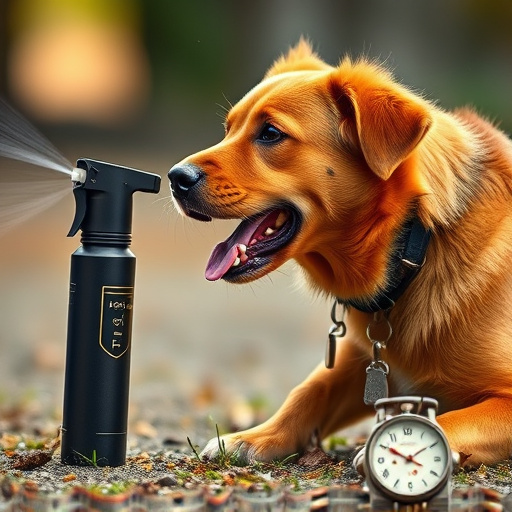Mace spray, an effective animal deterrent using capsaicin, can irritate pet skin. In case of exposure, immediate thorough rinsing with water is vital for neutralization (Neutralize Mace Spray on Pet Skin). Research shows controlled concentrations are safe and form protective barriers without causing permanent damage. After exposure, use a damp cloth or warm water to rinse off chemicals, avoid harsh soaps, and consider plain water baths. For sensitive pets, consult a veterinarian.
Mace spray, a powerful animal deterrent, has established itself as a significant tool in wildlife management and pet safety. This article delves into the science behind its effectiveness against animals, providing insights into its mechanism of action. We explore best practices for neutralizing mace spray on pet skin, ensuring both animal control and pet well-being. Understanding how mace spray works is crucial for responsible usage, especially when dealing with pets, and this guide offers practical tips for effective and safe application.
- Understanding Mace Spray: Animal Control and Pet Safety
- The Science Behind Mace Spray's Efficacy on Animals
- Best Practices: Neutralizing Mace Spray on Pet Skin
Understanding Mace Spray: Animal Control and Pet Safety
Mace spray, a powerful tool in animal control, is designed to quickly neutralize and subdue animals like dogs and cats. However, it’s crucial to understand its impact on pet skin to ensure safety. When mace spray comes into contact with an animal’s skin, it can cause irritation, redness, and temporary numbness. This is due to the active ingredients that work to disrupt the animal’s sensory perception.
For pet owners, the key lies in quick response and proper neutralization. If your pet comes into contact with mace spray, rinse the affected area thoroughly with water immediately. Understanding how to neutralize mace spray on pet skin can help mitigate potential harm. It’s also essential to keep mace spray out of pets’ reach and only use it as a last resort when traditional training or control methods have been exhausted.
The Science Behind Mace Spray's Efficacy on Animals
Mace spray, a popular animal deterrent, has gained recognition for its effectiveness in managing and controlling unwanted wildlife or feral animals. The science behind its success lies in its unique chemical composition, which plays a pivotal role in neutralizing potential threats. When deployed, mace spray creates an aerosolized solution that delivers a powerful blend of capsaicin, the active ingredient responsible for the burning sensation it induces. This ingredient disrupts the animal’s sensory perception and behavior, temporarily incapacitating them.
The impact on pet skin, while a concern for some owners, is a well-researched topic. Capsaicin, when applied topically in controlled concentrations, has been found to be relatively safe for animals. The spray forms a protective barrier, neutralizing the animal’s ability to detect and react to potential threats without causing permanent damage or irritation. This makes mace spray a game-changer in pet safety, offering a non-lethal solution for controlling aggressive or problematic wildlife while ensuring the well-being of beloved pets.
Best Practices: Neutralizing Mace Spray on Pet Skin
When dealing with mace spray for animal control, one of the primary concerns is how to effectively neutralize it if it comes into contact with your pet’s skin. The first step is to quickly remove any visible spray residue using a damp cloth or warm water. This initial action helps to dilute and disperse the chemical agent. After rinsing, apply a gentle cleanser to soothe the affected area.
It’s crucial to avoid using harsh soaps or solvents that could further irritate the skin. Opt for something mild and pH-balanced. For sensitive pets, consider seeking veterinary advice on recommended cleaning solutions. Additionally, keep in mind that frequent bathing with plain water may also aid in neutralizing any remaining mace spray chemicals, ensuring your pet’s comfort and safety.
Mace spray, while a powerful tool for animal control, requires careful and responsible usage. Understanding its science-backed efficacy and implementing best practices, such as effectively neutralizing mace spray on pet skin, are essential to ensure both animal safety and effective control. By following these guidelines, folks can navigate this method of control with confidence, fostering a safer environment for both pets and wildlife.
